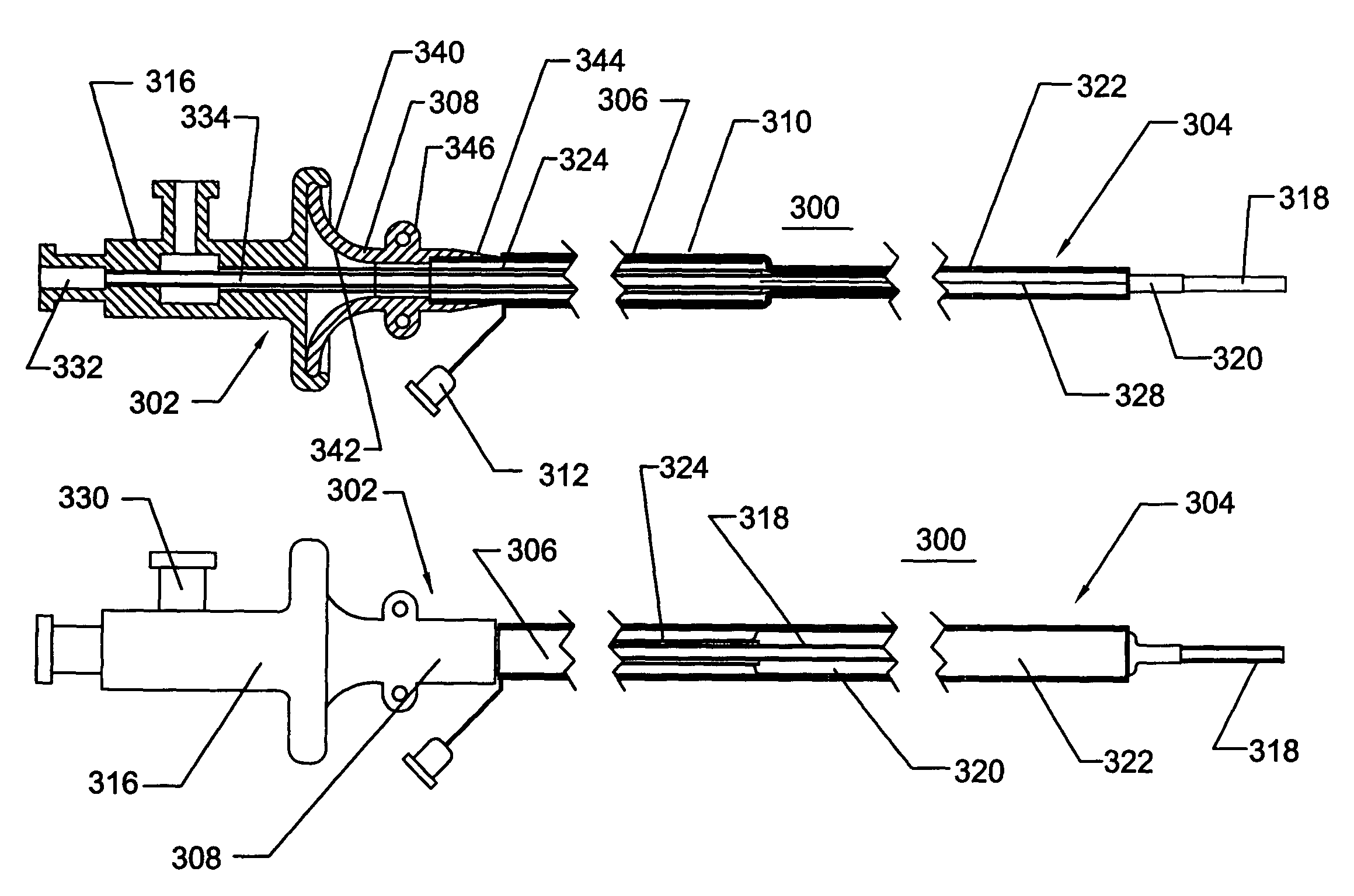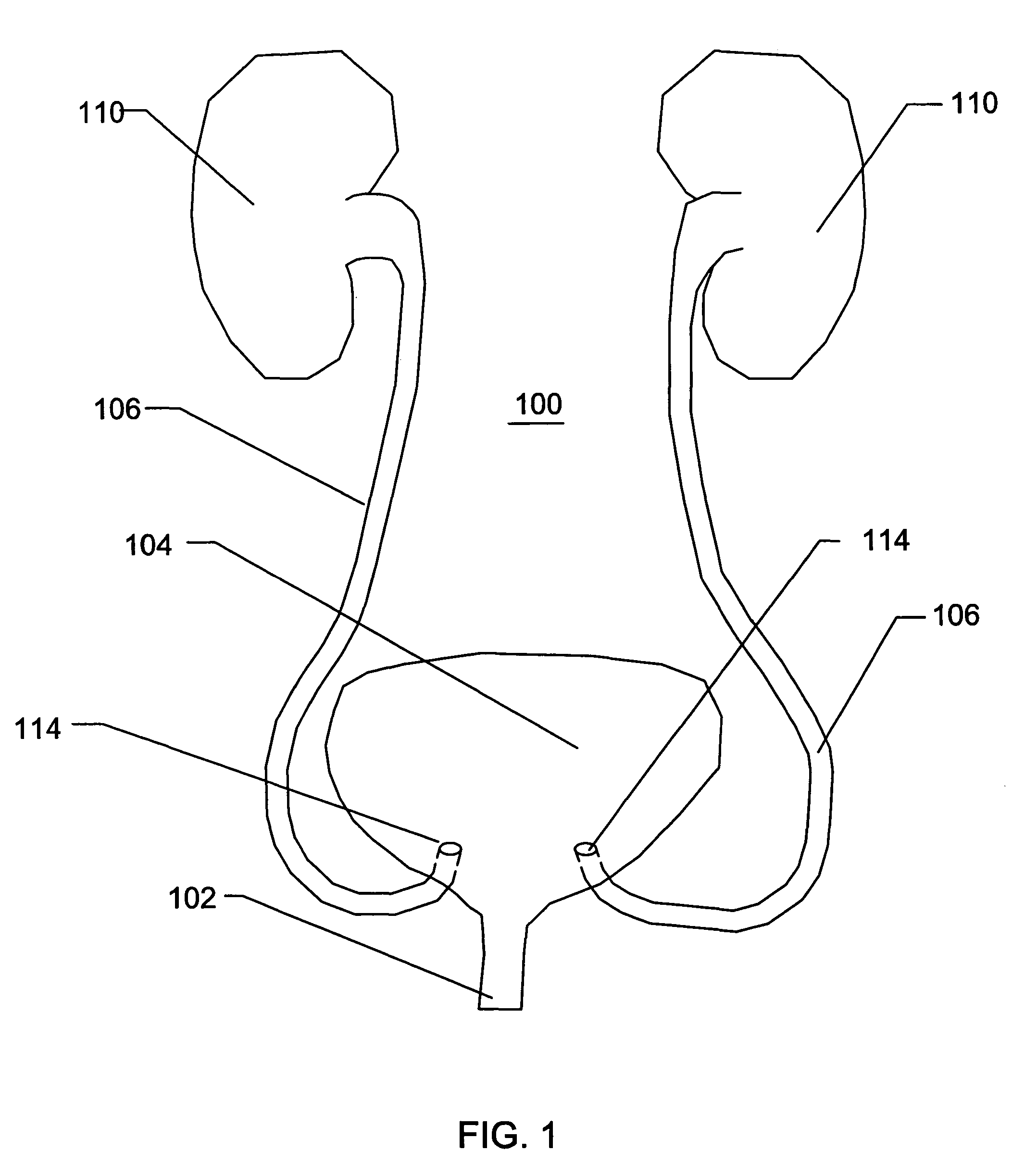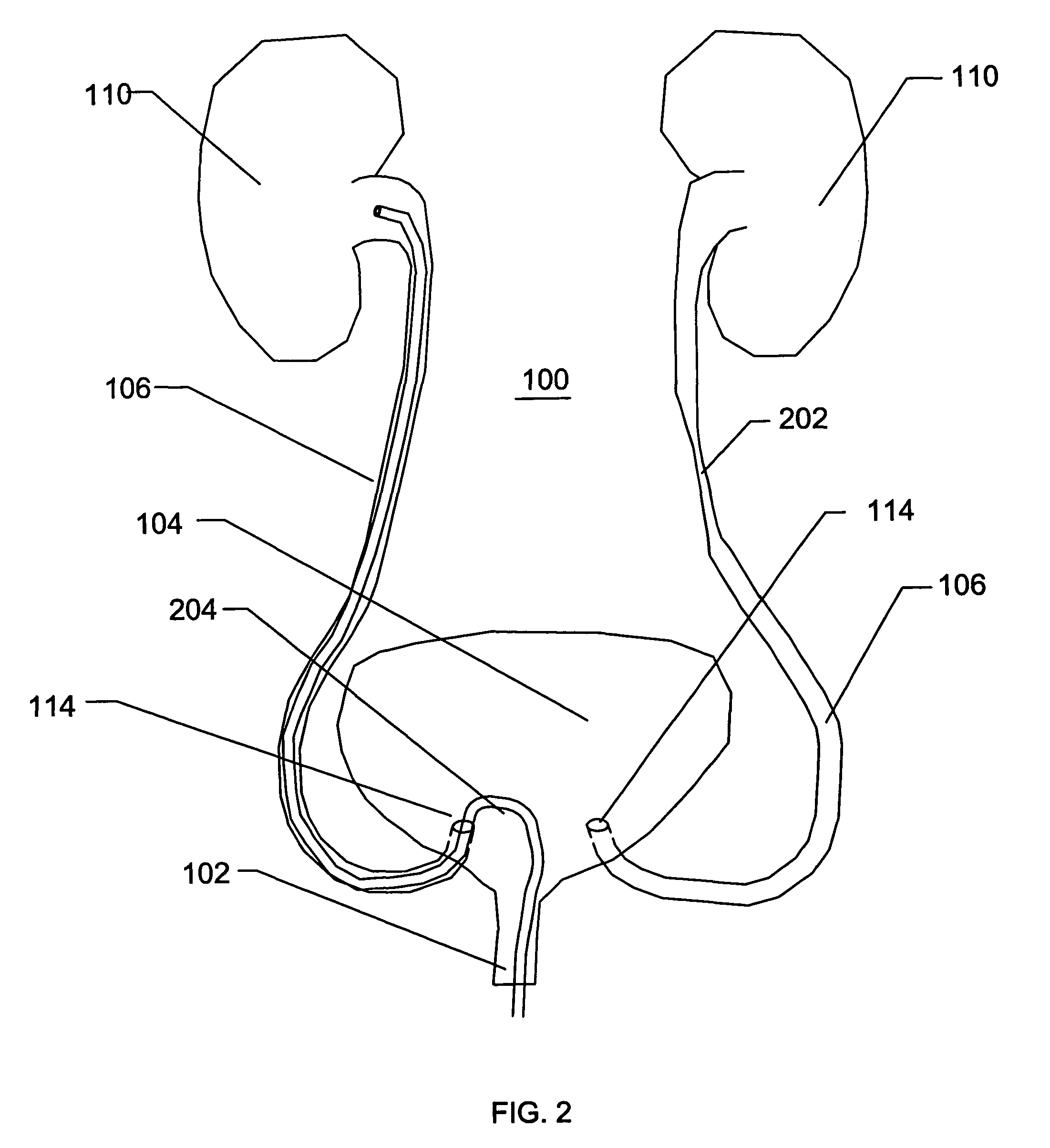Expandable transluminal sheath
a transluminal sheath and expandable technology, applied in the field of medical devices, can solve the problems of affecting the function of the urinary tract of mammals, affecting the function of the urinary tract, and leaking of the lumen or cavity contents into the surrounding space,
- Summary
- Abstract
- Description
- Claims
- Application Information
AI Technical Summary
Benefits of technology
Problems solved by technology
Method used
Image
Examples
Embodiment Construction
[0052]With reference to the FIGS. 1-14, various embodiments of a catheter or a sheath will be described. A catheter or a sheath, can be described as being an axially elongate hollow substantially tubular structure having a proximal end and a distal end. The axially elongate structure further has a longitudinal axis and preferably has an internal through lumen that can extend from the proximal end to the distal end for the passage of instruments, implants, fluids, tissue, or other materials. The axially elongate hollow tubular structure is preferably generally flexible and capable of bending, to a greater or lesser degree, through one or more arcs in one or more directions perpendicular to the main longitudinal axis. In many embodiments, the tubular structure and the internal lumen have a substantially circular cross-section but in other embodiments the cross-section can have another shape (e.g., oval, rectangular etc.)
[0053]As is commonly used in the art of medical devices, the prox...
PUM
 Login to View More
Login to View More Abstract
Description
Claims
Application Information
 Login to View More
Login to View More - R&D
- Intellectual Property
- Life Sciences
- Materials
- Tech Scout
- Unparalleled Data Quality
- Higher Quality Content
- 60% Fewer Hallucinations
Browse by: Latest US Patents, China's latest patents, Technical Efficacy Thesaurus, Application Domain, Technology Topic, Popular Technical Reports.
© 2025 PatSnap. All rights reserved.Legal|Privacy policy|Modern Slavery Act Transparency Statement|Sitemap|About US| Contact US: help@patsnap.com



